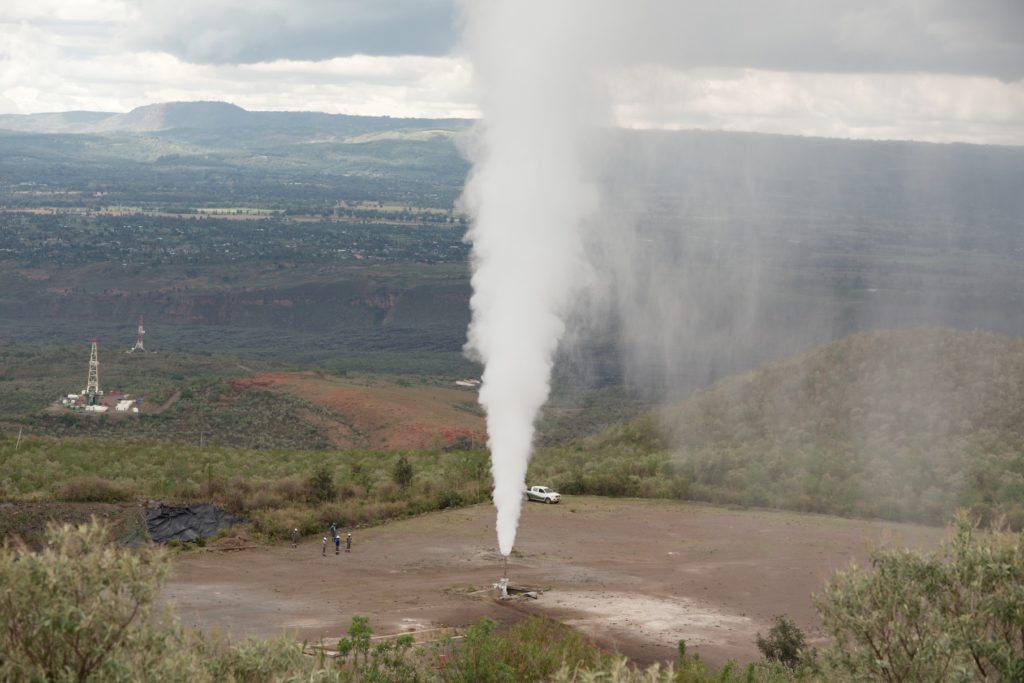Development assistance is increasingly turning to new innovative financing models to leverage grants with financing from the private sector. With mobilised funding having more than doubled over the last five years, it is becoming a significant trend in global development assistance.
The Menengai geothermal energy project in western Kenya is arguably representative of the zeitgeist of global development assistance. It is carried out by a consortium comprised of the African Development Bank via its African Development Fund, the European Investment Bank, Agence Française de Développement and the Government of Kenya in a mix of loans, grants and equity contributions in what is known as a blended financing project.
Blended financing is from the perspective of the European Commission, "an innovative financial instrument... for achieving EU external policy objectives." The rationale behind the use of "blending" is that it allows for increased leverage of an EU grant by combining them with loans and/or equity from other financiers (public and private). According to the European Commission, €3.4 billion in EU grants over the last 10 years has mobilised an estimated €57.3 billion in investments. Joint projects also allow for sharing of institutional capacity and technical expertise and can thereby lower significant barriers to public and private investment.
Development assistance for large-scale infrastructure projects have in the past often been associated with donor countries' desire for influence and economic opportunity. A decoupling of development assistance through blending thus also presents an opportunity to decrease donor countries' national influence with a potential for more commercially viable projects and greater benefits going to recipient countries.
With a potential to achieve up to "five times leverage" as mentioned by Mr. Gabriel Negatu, Director General for the East Africa Regional Development and Business Delivery Office at the African Development Bank, the attractiveness of using development funds in blended financing projects is understandable. He adds that many countries in the region would not pass due diligence required for private investors and blended financing instruments thus enable private investors to participate in projects by mitigating investment risks.
By focusing on projects that can attract private investors, there is however a risk that development funds are being diverted from basic social services in some of the world's poorest countries and instead directed towards projects in already productive sectors in more advanced developing countries. Additionally it risks crowding out existing private financing initiatives.
There is also evidence that it focuses excessively on certain sectors: according to the OECD, 72% of financing mobilised from the private sector from 2012-2017 targeted the financial services, energy, industry, mining and construction sectors. While an estimated €30 billion ($33.9 billion) was mobilised from the private sector in 2017 in blended financing operations, having more than doubled since 2012, it still remains small compared to the total global development assistance reaching €130 billion ($146.6 billion) in 2017.
While there is a concern that blended financing projects can be cumbersome in their oversight, they may also present an opportunity to promote adherence to higher standards. With the right participants there is arguably a potential for increased oversight with each participant having to satisfy their own auditing requirements and complaint procedures. A confidential complaint has, for example, been lodged (and deemed inadmissible) with the European Investment Bank for human rights violations in relation to the Menengai project.
According to Mr. Negatu this also highlights a particular problem associated with blended financing projects: different organisations might have very different requirements and expectations and projects may be halted by one participant for infractions that others are willing to tolerate. He suggests parallel financing as a solution whereby a project is separated into parts for each participant to independently finance in accordance with its own requirements and procedures.
Exploration is a particular risk in the development of geothermal energy with each exploratory drilling costing around $1 million. For the Menengai project, an innovative financial model has been set up that separates the stages of development to mitigate such exploration costs for private investors. The three private companies that have been contracted to provide electricity are thus only involved in the building of their own power plants which are connected to an already functioning steam-gathering system that is developed and managed by the Kenyan state-owned Geothermal Development Company.
Increasingly stable and competitively priced energy is according to Dr. Joseph Njoroge, Principal Secretary at Kenya's Ministry of Energy, key to the industrialisation of Kenya and its plan of providing electricity to every household by 2022 as well as for the administration's long-term "dream" of Kenya becoming an industrialised economy with an income above the global average by 2030.
In Kenya's energy mix, the current 660 MW geothermal energy capacity (out of a total capacity of 2,700 MW) is particularly prized by the government for its stable supply and low cost. The three initial power plants currently being developed in Menengai are projected to add an additional 105 MW (out of a total potential capacity of 400 MW in Menengai). Kenya's ambitious vision thus partly hinges on the success of the Menengai project and its innovative financing model.
Christian Ernhede

